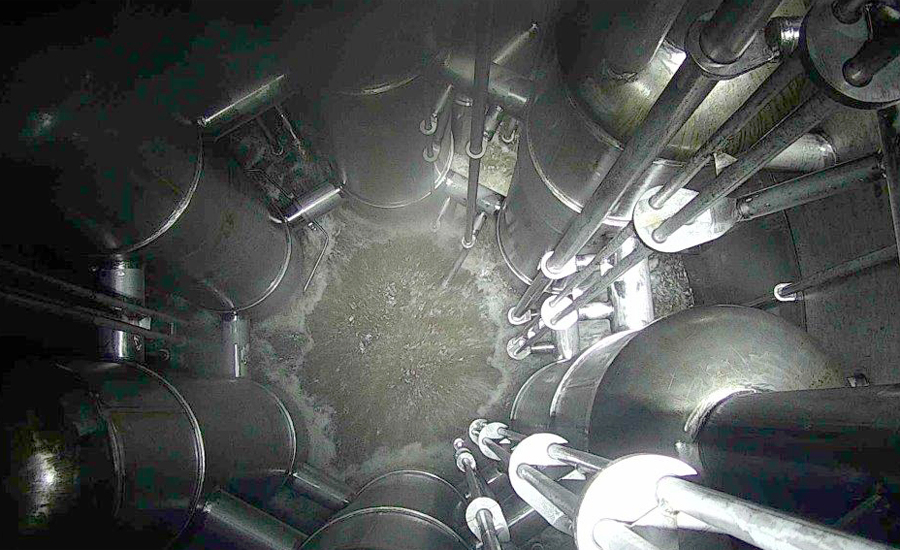Final Testing Starts at Hanford for Radioactive Waste Mix

As work moves forward on the Hanford Waste Treatment and Immobilization Plant (WTP) at the Dept. of Energy’s Hanford Nuclear Waste Site in southeastern Washington, crews have started the final stage of testing intended to resolve one of the remaining technical issues on the project.
The U.S. Dept. of Energy Office of River Protection and Bechtel National Inc., the contractor responsible for the WTP project, started the final phase of full-scale testing of control equipment and systems designed to safely mix radioactive waste in vessels and the WTP Pretreatment Facility. The vessels will store and process liquid radioactive waste before it gets vitrified into glass at other WTP facilities.
“This represents substantial progress and will lead to restarting engineering, procurement and construction on the pretreatment facility,” says Bill Hamel, Office of River Protection assistant manager for the WTP project, in a statement.
The full-scale test vessel includes an array of six pulse-jet mixers designed to keep the contents of the 22,000-gallon vessel safely mixed by precluding solid particles in the waste from settling at the bottom. Testing focuses on the equipment used to properly mix the waste.
“Proper mixing of waste in the vessels is critical to safely processing and treating the waste stored in Hanford’s underground tanks,” says Peggy McCullough, Bechtel project director for the WTP Project, in a statement.
The 65-ton full-scale test vessel measures 16 ft in diameter and 36 ft in height. Once filled with liquid and simulated waste—meant to mimic the characteristics of the radioactive waste stored at the Hanford tank farms—it will weigh 310 tons.
This third and final phase of vessel testing should finish before 2017 closes out and results of the testing will define the informal design of the vessels intended for permanent installation and use in the Pretreatment Facility.
As work pushes forward on the Hanford site, the U.S. Dept. of Energy continues to move 56 million gallons of chemical and radioactive waste stored in underground tanks—the result of more than four decades of plutonium production. The Office of River Protection must retrieve, treat and dispose of the waste, the largest and most complex environmental remediation project in the nation.
The WTP, also known as the Vit Plant, will immobilize the millions of gallons of radioactive liquid waste stored in the 177 underground tanks via vitrification, turning waste into glass.
Follow Tim Newcomb in Twitter at @tdnewcomb.
